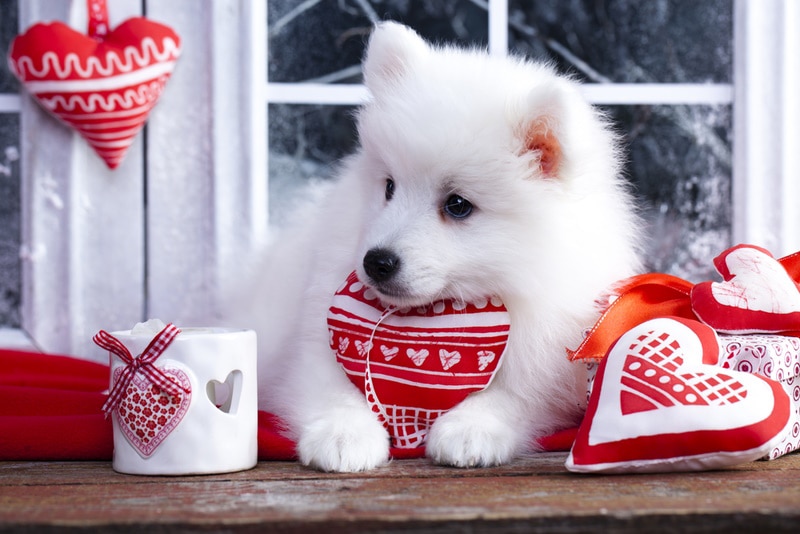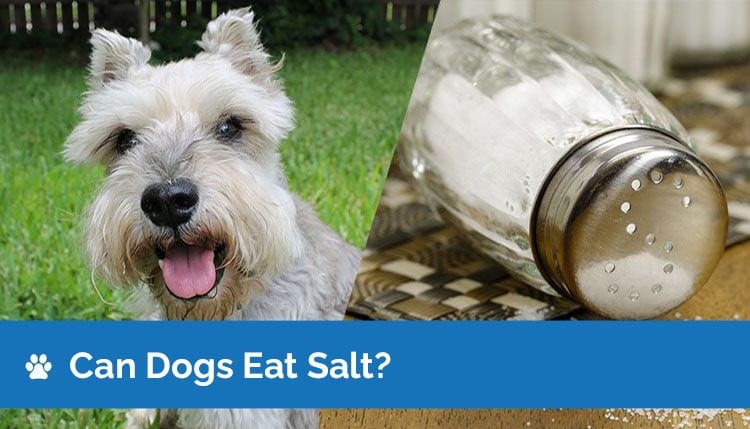Do Tibetan Mastiffs Shed a Lot? 6 Factors Affecting Shedding

Updated on
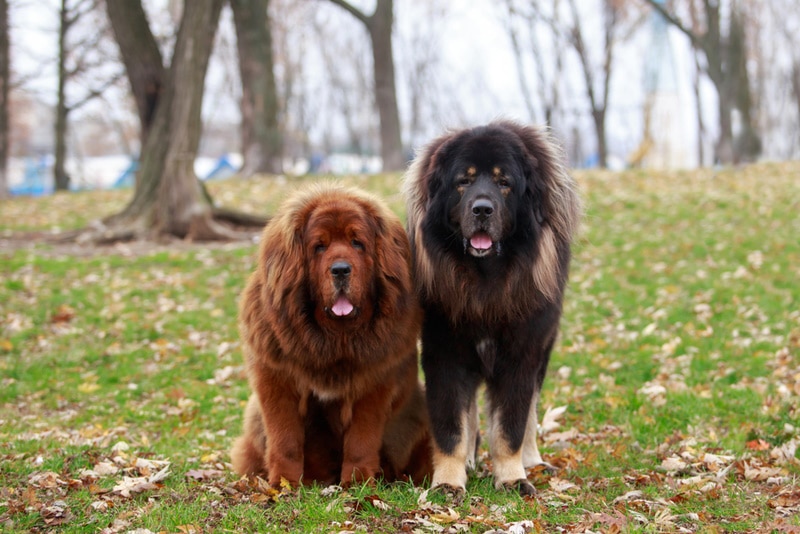
Tibetan Mastiffs are huge, well-built dogs that were initially bred to deter predators from attacking monasteries in ancient Tibet. They are some of the oldest, most devoted, and most faithful dog breeds.
Since the dog thrives in mountainous regions, they don’t shed that much during the year. However, they shed seasonally during fall or spring, and only at this time will they produce a significant amount of fur.
This article covers everything you need to know about Tibetan Mastiff shedding tendencies, including the shedding season, factors affecting their shedding frequency, and grooming tips to keep your pet healthy.
How Much Do Tibetan Mastiffs Shed?
The Tibetan Mastiff features two beautiful coats—an outer guarding coat at the top and an insulating undercoat to keep it warm during the cold seasons. Despite having such a thick coat, surprisingly, they shed so little. In fact, they are considered a moderate to light shedder.
However, dogs may shed in coordination with seasonal changes, a process referred to as “coat blowing”. In Tibetan Mastiffs, coat blowing occurs mostly in one or two sessions at specific times of the year, usually referred to as “seasonal sheds”.
The main shedding occurs in the months of spring as the dog gets rid of their winter fur to pave the way for a fur coat better suited to the temperature changes associated with the upcoming season. During this 2–4-week period, your Tibetan Mastiff will experience significant molting. This is when you will likely notice a significant amount of fur build-up in your house.
The shedding can also happen in the months of fall as the dog sheds the winter coat for a thick winter coat.
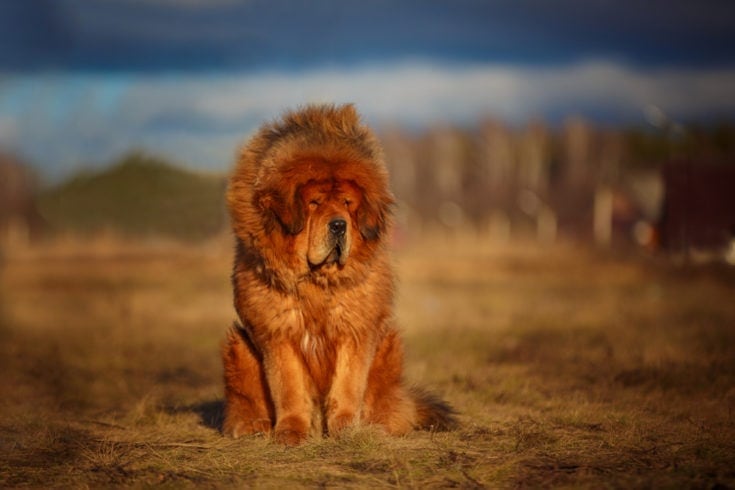
The 6 Factors Affecting a Tibetan Mastiff Shedding
1. Coat Quality
If your Mastiff has a poor-quality coat, or its skin gets dry regularly or appears unnatural, chances are high that it will shed aggressively. This happens whether it’s shedding season or not.
When adopting a Tibetan Mastiff, consider getting one from a reputable breeder with the necessary health certifications to ensure you are getting a puppy with a healthy fur coat to keep the shedding frequency at a minimum.
2. Temperature
Usually, shedding in Tibetan Mastiffs will depend on the environmental temperature. When the weather is hot, they are likely to shed more. But if it is significantly cold outside, they will only shed small amounts of their fur as they attempt to keep warm. If you live in a predominantly cold environment, your dog is likely to shed even less than it already does.
3. Food
Another factor affecting the amount of shedding would be food. If your dog overeats, it is likely to shed more than usual. This is mainly because of the amount of oil produced by the dog’s body.
Moreover, poor meals and diet changes can also affect your dog’s shedding frequency. They can easily result in a nutritional deficiency that can harm your dog’s fur coat. Fortunately, you can improve the health of your dog’s fur by adding supplements to its diet.
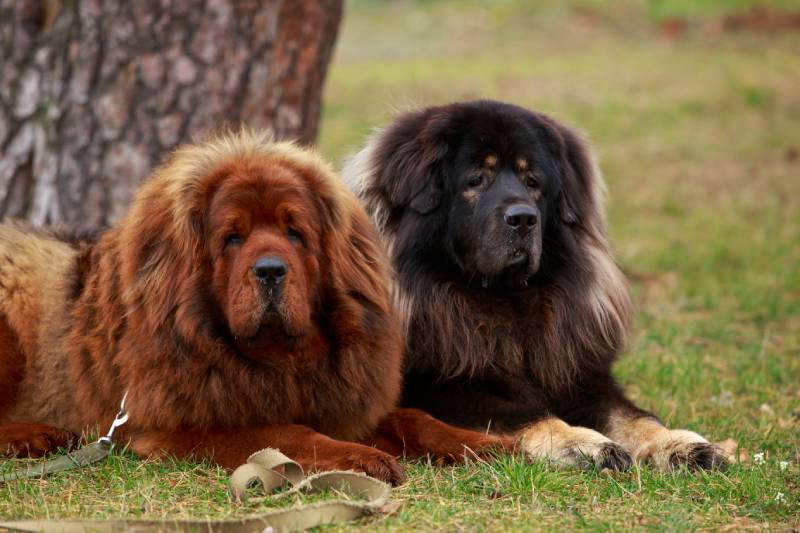
4. Medical Conditions
Some medical issues, such as hypothyroidism, can also increase your dog’s shedding. A common disease in dogs, hypothyroidism is caused by reduced levels of the thyroid hormone in a dog’s body. Symptoms of this disease may include hair loss and flaky skin. If you suspect your dog is shedding because of this medical condition, schedule an appointment with your local vet as soon as possible.
5. Allergies
Shedding can also occur in your Tibetan Mastiff due to allergies. Therefore, you should be on the lookout for potential allergy sources for your dog and protect it from the triggers. Common symptoms of allergic reactions in Tibetan Mastiffs include biting or scratching their skin, as well as small red bumps on the skin surface.
6. Age
You are less likely to notice any sort of shedding from a young Tibetan Mastiff. However, as the dog grows older, it will experience frequent shedding. And as the years go by, the shedding moderation will become even heavier.
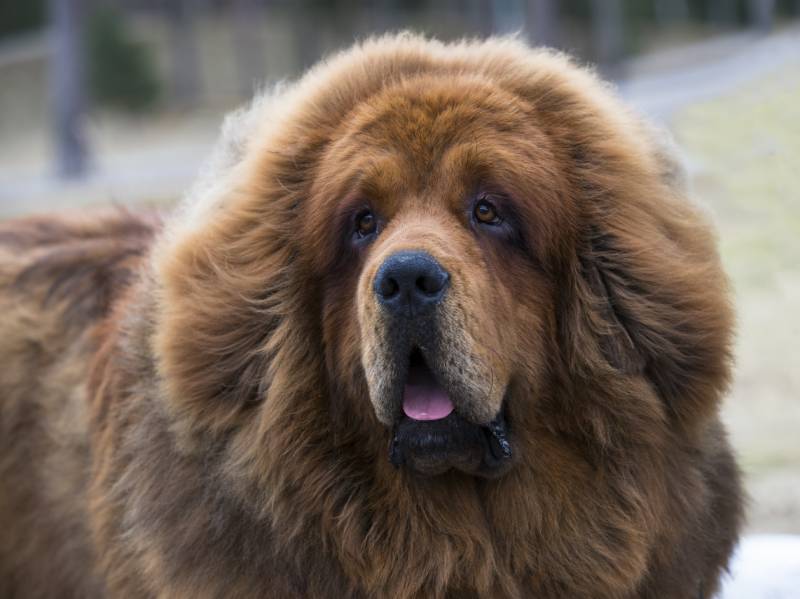
The 4 Grooming Tips to Keep Your Pet Healthy & Safe
While you cannot prevent your Tibetan Mastiff from shedding, you can make the process manageable for you and your dog.
One of the best things about owning a Tibetan Mastiff is the fact they have minimal grooming needs. You need only pay attention, use the right tools, keep a consistent routine, and invest a little time and effort to keep your dog groomed up and looking dapper.
Here are a few tips on how you can go about it.
1. Brushing
Tibetan Mastiff owners recommend that you brush the coat of your dog at least once or twice every week. Throughout the year, especially when your dog is undergoing the heaviest seasonal molting, a slick brush made from wire bristles and plastic or rubber tips are ideal to remove tangles or mats that may have built up.
You can also use a de-shedding tool such as an undercoat to remove dead fur from the topmost coat as well as the undercoat. If your dog sheds a lot, consider increasing the brushing frequency to 3-4 times a week to collect and contain the dead fur before it falls off on its own.
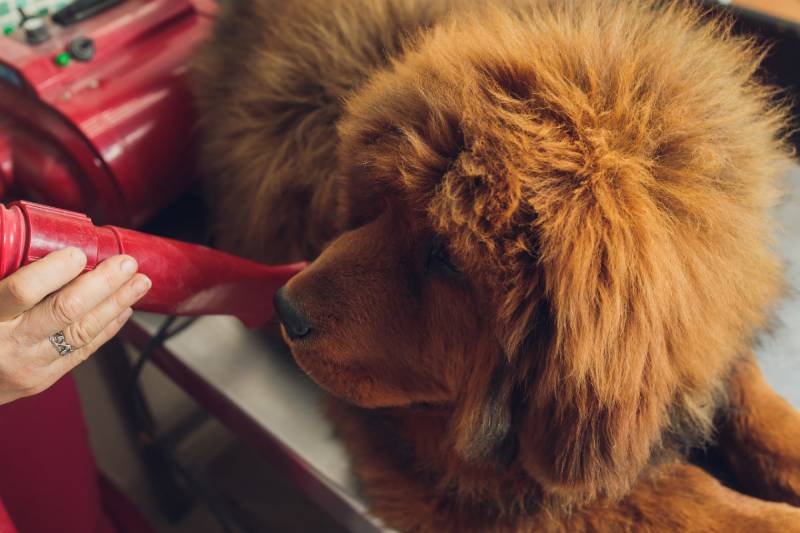
2. Bathing
Tibetan Mastiffs have thick fur, which accumulates a fair amount of dust that can very quickly become smelly. Therefore, experts recommend you bathe your dog at least once every 4 to 6 weeks.
Of course, this will depend on your dog’s relative coat condition. If your dog spends a significant amount of time exploring outdoors, it’s likely to expose its coat to bugs, dirt, and elements. Therefore, their coats will be soiled a lot quicker, thus needing frequent washing routines to keep them clean.
Developing proper bathing and drying skills for your dog is the best way to ensure your Tibetan Mastiff maintains a beautiful and healthy coat. Remember to remove as much loose and dead fur by brushing the dog’s coat before bath time. This will maximize the effectiveness of routine bathing sessions.
3. Dieting
As earlier mentioned, a dog’s diet plays an important role in its shedding frequency. If your dog lacks excess sebum or protein in their diet, they are likely to shed more coat fur. To reduce the amount of fur that your Tibetan Mastiff sheds, ensure that they receive a nutritious and balanced diet.
4. Hair Supplements
You can reduce the shedding frequency of your dog by complementing its diet with hair supplements to help improve its general fur and skin health. The best hair supplements should have Omega 3 and coconut oil. However, you should consult your local vet before giving your dog any sort of hair supplement to avoid side effects or negative reactions.

Final Thoughts
Just like you would expect from most dog breeds, the Tibetan Mastiffs also sheds some small amounts of fur throughout the year. Usually, this dog breed experiences two seasonal sheds in spring and fall. However, the frequency and amount of hair that Tibetan Mastiffs shed will depend on age, climate, diet, and individual health conditions.
On matters of grooming, Tibetan Mastiffs are surprisingly easy to take care of. With a good shampoo and quality brushing done at least twice every week, you can effectively manage your dog’s shedding without having to go to a professional groomer.
Featured Image Credit: Olga Aniven, Shutterstock

